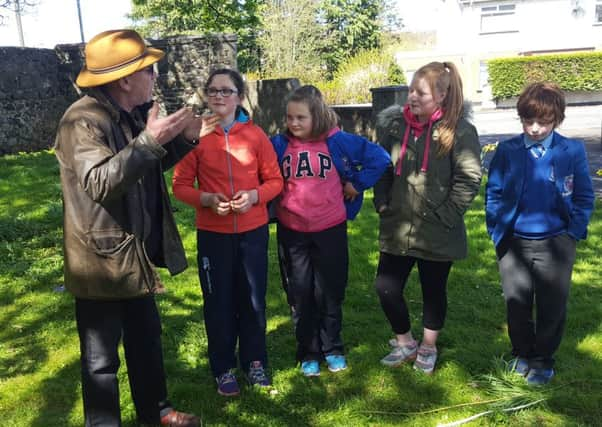Uncovering Macosquin's past: archeological dig unearths secrets


The week-long excavations began last Monday, and saw three trenches being excavated in the village on the outskirts of Coleraine.
Using archives, which illustrate what Macosquin was intended to look like in the early 1600s, local children and Macosquin residents teamed up with Dublin based archeologist Dr James Lyttleton, and well known local archaelolgist Nick Brannon, to delve into their past.
Advertisement
Hide AdAdvertisement
Hide AdUncovered in once trench by children from Macosquin’s primary seven class, in the garden of the rectory, was pottery, animal bones and 17 century bricks believed to be from a house owned by Francis Gill, an English settler to the village.


“It is great for these children to see parts of 17th century homes under the lawns of homes here in Macosquin,” said Nick at the site on Wednesday morning.
Nick, a former Director of Built Heritage at the Environment and Heritage Service went on: “The village of Macosquin is really well documented, so it’s really a case of joining the dots.
“We know what we should find, and we know what to look out for - it’s just digging in the right area, “ he joked.
Advertisement
Hide AdAdvertisement
Hide AdNick revealed: “The village stood on the Coleraine – Londonderry road (now by-passed), and had a much earlier Cistercian abbey, from the 13th century, at one end of the village, and a manor house at the other.


“The abbey site, which survives as the Church of Ireland, is complemented by the old manse, formerly the manor house site at the other end of the village.
“We can join the dots and deduce where the Merchant Taylors’ tenants live.
“We beleive that our trench in the garden of the rectory, has uncovered items from Francis Gill’s settlement.
Advertisement
Hide AdAdvertisement
Hide Ad“We found animal bones, possibly from a pig, slates from the roof of the house and hand made bricks.
“These are all items you would have expected from a site of a former home, and all right here in the front garden of the rectory.”
Dr Lyttleton went on: “This is community archeology at it’s best.
“We have had the children from the Primary School getting involved, and they have really enjoyed the whole experience.
Advertisement
Hide AdAdvertisement
Hide Ad“Earlier this week I spoke to a church group about what we hoped to find here - they were really interested in the history of the area.
“I guess it’s like a hands on history lesson for the young people, who were very keen to get their hands dirty and get to work,” he said.
“We were really lucky to have historical archives of what Macosquin looked like 400 years ago, so that made it easier for us to concentrate our digs,” he said.
Macosquin teacher, Mr Patterson said that children from the senior school had all been involved in the project.
Advertisement
Hide AdAdvertisement
Hide Ad“It’s been great to get out and get involved in such a wonderful project.
“We thank both James and Nick for allowing us to be part of it.
“The pupils have really enjoyed it, and to be honest I don’t think they expected to learn so much.
“I think it has opened up their eyes a little bit about the world around us.”